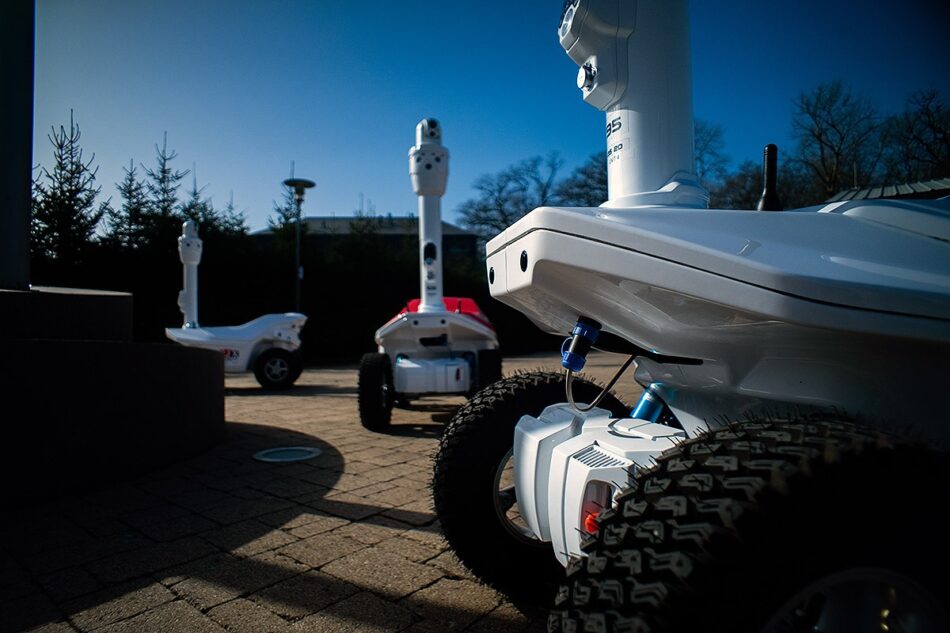The conversation about robots replacing human jobs comes up in every industry, and security is no exception. But the real shift happening in Portland isn’t about replacing the other. It’s about human guards and robots working together to create safer, smarter environments. Property owners, facility managers, and event coordinators are realizing that robotic security guards Portland aren’t here to compete with people. They’re here to complement the work that trained guards already do.
Security challenges in modern environments require layered solutions. Combining technology with human presence is one of the most reliable ways to meet those challenges.
What robotic security guards do
Security robots are mobile devices with cameras, sensors, and data tools. They’re designed to patrol a property, detect movement, capture video footage, and report real-time incidents. They don’t sleep, don’t get distracted, and follow the same patrol route consistently every time.
These robots can scan for unusual heat signatures, monitor air quality, detect unauthorized vehicles, and log every pass they make. Some models even include two-way audio to communicate with human guards or issue verbal warnings on-site.
Businesses working with security robot companies Portland typically deploy these machines in large, repetitive, or hard-to-staff full-time areas, such as warehouses, parking garages, and gated lots.
The strengths of human guards
Despite all the tools robots bring, they can’t replace real-time judgment. Human guards make decisions based on context, body language, and emotional cues. They can speak with people, respond to tone, and de-escalate situations face-to-face. They’re also trained to handle emergencies like medical incidents or aggressive confrontations.
Guards build relationships with staff, tenants, or customers. They learn a location’s daily patterns and pick up on changes that don’t show up on camera. This human presence has a calming effect and often deters issues before they start.
Pairing robots with guards allows each to do what they do best. Robots handle routine monitoring and data collection, while guards focus on interaction, decision-making, and fast response when something goes wrong.
When to use both on the same site
The best setup uses robotic and human guards to cover different parts of a site. For example:
- A robot patrols parking areas overnight while a guard monitors building entrances.
- Robots sweep large warehouse floors, feeding footage to a command center staffed by trained personnel.
- Security teams get alerts from robot sensors and decide when and how to intervene.
Using robotic security guards in Portland also helps companies stretch their coverage without lowering standards. Instead of hiring more guards than they need, managers can assign robots to cover consistent tasks and let human guards focus on risk response, visitor management, and critical incidents.
What to look for in a provider
Not all security tech is the same. When evaluating security robot companies in Portland, property managers should ask:
- What patrol features do the robots support?
- How are video feeds stored and accessed?
- Can the system detect heat, sound, or other unusual environmental activity?
- Is the software updated regularly?
- How do human teams integrate with the platform?
The best providers offer a full solution, not just a device. They provide support with setup, team training, and a dashboard where security leads can monitor all activity. They also offer advice on where to position robots and how to write patrol routes that support the location’s flow.
Benefits beyond cost
People often assume robotics is about saving money, but that’s not true. Using robots can:
- Improve coverage on large or open properties
- Increase accountability through logged patrols
- Provide video records for reviewing incidents or proving compliance
- Detect environmental issues like smoke, gas leaks, or high temperatures
- Help guards avoid burnout by reducing repetitive tasks
Security managers who work with security robot companies in Portland are not replacing their human workforce. They’re giving that workforce better tools. And they’re gaining access to data that helps them improve how they handle safety, access, and emergency planning.
Final takeaway
Robots and guards do different jobs. One is built for consistency and data, while the other brings experience and adaptability. Security gets stronger when both are used together.
Businesses, schools, hospitals, and industrial sites benefit from hybrid systems in which technology handles the routine and people handle the unpredictable. By deploying robotic security guards in Portland alongside trained guards, managers gain better awareness, faster response times, and fewer blind spots.
The future of security isn’t about choosing between man and machine. It’s about pairing both to protect people and property more intelligently.








